Although I’m known mostly as a trout angler, any spare time I have during the late fall is spent chasing musky. For the last seven years I’ve spent almost every free hour chasing the “fish of 10,000 casts.” I got the bug so bad I even purchased a jet boat with musky fishing in mind. Like most musky anglers, so much of my time can be summed up by fishless days and broken spirits. While I don’t consider myself an authority on fly fishing for musky, over the past seven years I’ve taken note of a handful of common sense tips that can help beginners cut their teeth when chasing these toothy critters.
Practice on pike and pickerel
I think one of the most useful musky practicing tools is fly fishing for pike or pickerel, “cousins” of the musky. The main difference between these species is that pickerel and pike are generally more aggressive and more willing to eat a fly. This provides excellent opportunities to practice casting and retrieving larger flies, becoming conditioned to savage strikes near and far from the boat, using jaw spreaders, becoming familiar with knots for wire, and retrieving flies from toothy mouths. Plus, you’re given more chances to make mistakes and learn from each misfortune you have. I know this isn’t a possibility for everyone, but I feel my pickerel experience gave me confidence (with all of the above) when targeting musky. There’s no doubt confidence plays a significant role in one’s success, and my time fishing for pickerel gave me just that for my future musky encounters.
Pickerel fishing offered me the opportunity to make common casting and hookset mistakes prior to getting legitimate shots at musky, especially with boat side eats. For example, my most common mistake was overreacting to an aggressive apex fish suddenly appearing beside my boat and violently taking the fly. One moment you’re watching your fly swim with no fish in sight. The next moment, you see a freshwater alligator swimming a foot behind your fly. Nerves set in, and it’s easy to overreact by using the dreaded trout set (i.e., using the rod tip to set the hook and pull the fly out of the water). I needed to experience multiple boat side eats to condition me to these explosive and sudden strikes.
After dozens of experiences with local pickerel, my nerves finally settled down. I curbed my overreactive enthusiasm and focused on keeping the fly moving (e.g., with a figure-8 movement) while using a strip set during the take. Although I still get excited when seeing a musky pursuing my flies, these days I’m able to control those raw emotions and not overact—likely the most common mistake new musky anglers make.

You don’t need an 11-weight fly rod
Most of the musky I catch on flies range from 30” to 40”. I’ve caught and played a fair number of these fish using lighter rods in the 7-8 weight class. I accidently caught and landed several good muskies earlier this season while throwing large 4-5 inch streamers for pre-spawn smallmouth bass. These rods had more than enough backbone to land a 30” plus musky.
During the late season, musky on my home waters tend to go on feeding binges, as they attempt to put on some weight heading into the coldest winter months. This presents the opportunity to attract musky using larger (and more wind-resistant) flies. It is when throwing these larger flies that I use heavier, 11-weight rods.
Although the strength of an 11-weight rod is a bonus when playing larger fish, I don’t feel I have to have that much rod power for playing the average size musky on my home waters. When compared to quality smallmouth bass within the 18”-20” range, I think 30 to 36” musky offer a similar fight, so I don’t feel 11-weight rods are essential for playing these fish. In the spring and summer, my experience is that it’s easier to catch musky (intentionally or accidentally) with smaller flies. This is the reason I may only bring a 7- or 8-weight during these seasons as these rods take less toll on the body after a day’s fishing, when compared to the 11 weight broomsticks I use in the fall.
In the fall, I feel my rate of musky success increases when throwing larger musky patterns that resemble miniature chickens. This is when I feel the need for larger 11-weight fly rods to carry and pull the larger patterns to the target. Casting large musky patterns on an 11-weight rod is labor intensive and is the reason I only use these heavy clubs during the late fall season—a period when larger patterns seem to outproduce smaller patterns. My goal for the coming years is to find larger musky patterns easily presented with lighter rods and lines.

Know where late season musky hold
I’ve heard trout anglers mention that 80% of trout hold in 20% of the water, which I feel is a fair statement. With musky on my home waters, I feel that 95 percent of these apex predators hold in 5 percent of the water, especially during the late season. I think locating late season musky is easier as it seems musky follow all other fish (aka baitfish) to the slower and deeper river sections. Knowing where the deepest and slowest sections is a good place to start. On my local rivers the late season holding water may be spaced 1-3 miles apart so be prepared to cover distance, since fishing for musky between these pools is likely a waste of time.
It can be overwhelming fishing larger bodies of water but musky are like any other fish-they have food and shelter requirements. Locate submerged timber and jog jams, drop-offs, flats that are connected to deeper pools, along with both the top and bottom of large pools. At first, it may seem that you’re looking for a needle in the haystack. It takes time to locate these spots. And just as important: locate baitfish wintering spots, as you can be sure musky will be near these locations when on the feed.
The easiest way to do all the above is using fish finders. Spending a day mapping and learning the layout of the water and locating high concentrations of baitfish may be the best investment you make in becoming a successful musky fisher. The knowledge of knowing where not to fish is just as important as knowing where to fish, especially if musky do hold in only 5 percent of the water. I’ve become efficient in targeting prime spots instead of wasting my time casting to areas that may never produce a late season strike. Learning my water has resulted in a significant increase in musky sightings and hook-ups. Do your homework and your musky encounters will begin to rise. Fail to do your homework and you’ll end up practice casting more than actually fishing.
Embrace suffering
Successful musky anglers have the ability to repeatedly suffer losses and fishless days. Musky fishing isn’t a sport of instant gratification where you can casually just walk to a body of water, make a few casts, and immediately be rewarded with a tug on the other end of the line. And rarely are there shortcuts to musky success. Even hiring a world-class musky guide won’t guarantee success. That guide can put you in the right areas at the right times, but getting the local musky population to chase your fly is a different story. Often the weather, moon phase, and all the stars appear to be lined up and you end up not seeing a fish all day. It can be maddening knowing you’re floating over fish and yet failing to see one. This is why I feel the successful musky anglers I know are built differently than the everyday recreational fly fishers—they anticipate and, dare I say, embrace suffering long days without any positive feedback from the fish.
Musky fishing is a war of attrition—long term periods of investment for a few occasional victories. Your body takes a beating from casting heavy rods and large flies for hours, with sometimes little-to-no reaction from the fish. Your mental state is on high alert at all times—not wanting to blow one of the few opportunities you may get each season with a musky on the fly. But as the saying goes, the final reward is so much greater when a great challenge has been met. At the time of this writing, I cannot think of a more rewarding experience than connecting with a musky on a fly rod. It has become my current obsession.





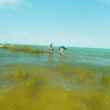





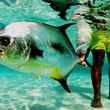



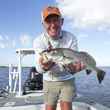








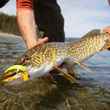




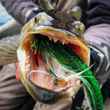
Comments
Geoff Roznak replied on Permalink
Good article.
It would have been good to spend another paragraph on gear, discussing the differences between repurposed salt water rods and purpose built musky fly rods - there's a world of difference in how they are used, and how they are made. A mention that metal line guides used for tungsten infused sinking lines will wear out - and possibly damage your line, and cost you a fish. Ceramic line guides are the way to go here...or at least something harder than tungsten.
Another thing that jumped out at me was the suggestion to use fishing electronics to learn the water. I'm a long time fin of electronics, having adopted side and down imaging from day one, and I use them extensively...but...
...I don't know about musky rivers in other areas, but other than the bigger, deeper areas on our rivers around here (I'd say less than 5% of the overall productive water) a transducer hanging in the water wouldn't survive the first day's float.
Pages